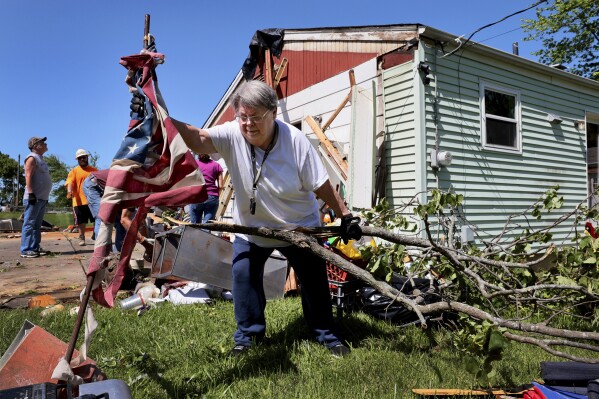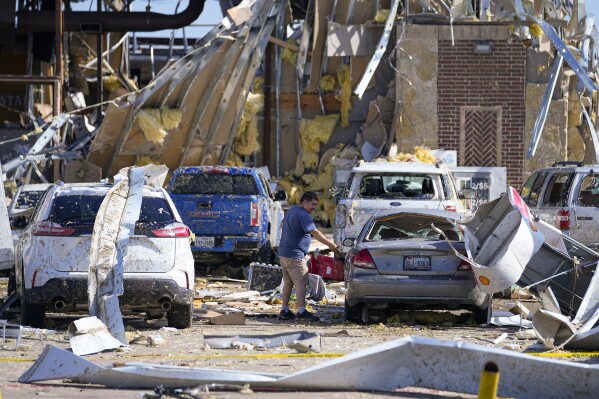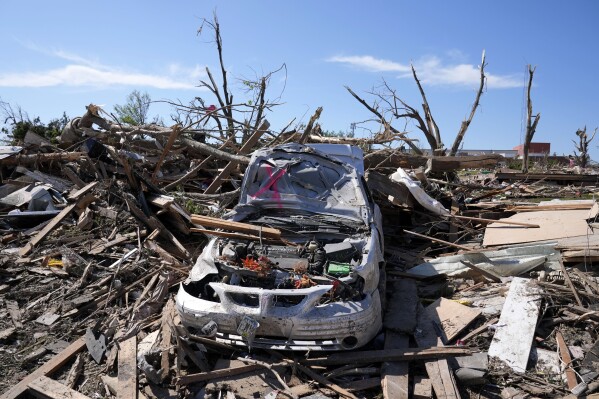A `gustnado’ churns across a Michigan lake. Experts say these small whirlwinds rarely cause damage
GRAND RAPIDS, Mich. (AP) — An unusual weather phenomenon called a “gustnado,” which looks like a small tornado but is actually a type of whirlwind kicked up by thunderstorm winds, brought some dramatic moments to a western Michigan lake over the weekend.
Video posted on social media shows the gustnado churning across Gun Lake south of Grand Rapids on Sunday, the clouds rolling rapidly as objects fly and people scream.
The National Weather Service included screen shots from that video on its Grand Rapids Facebook page explaining the ominous, swirling winds and clouds.
Meteorologist Nathan Jeruzal said that unlike tornadoes, which begin aloft in the atmosphere’s mid-levels then descend to the ground, gustnadoes form as small but turbulent pockets of wind produced by a thunderstorm’s downdrafts and outflow, creating a swirl at or near the ground.
NOAA describes a gustnado as “a small whirlwind which forms as an eddy in thunderstorm outflows.” Jeruzal said they typically don’t cause any damage.
“They’re kind of like cousins to whirlwinds. They form in a very short time frame and they last only briefly,” he said.



The weather service said several gustnadoes formed Sunday in western Michigan during a thunderstorm “along portions of the leading edge of the storm’s gust front.”
Jeruzal said the only gustnado images the agency had seen are the ones from Gun Lake, located about 19 miles (30 kilometers) south of Grand Rapids. He said the weather service was not aware of that one causing any damage.
Gustnadoes, like the one seen on Gun Lake, typically have winds of from 30 mph to 50 mph (50 kph to 80 kph), placing them below an EF-0 tornado — the weakest of twisters — which begin with winds of 65 mph (105 kph), Jeruzal said.
“They’re just smaller and weaker and not as dangerous as a tornado,” he said.
Disclaimer: The copyright of this article belongs to the original author. Reposting this article is solely for the purpose of information dissemination and does not constitute any investment advice. If there is any infringement, please contact us immediately. We will make corrections or deletions as necessary. Thank you.





